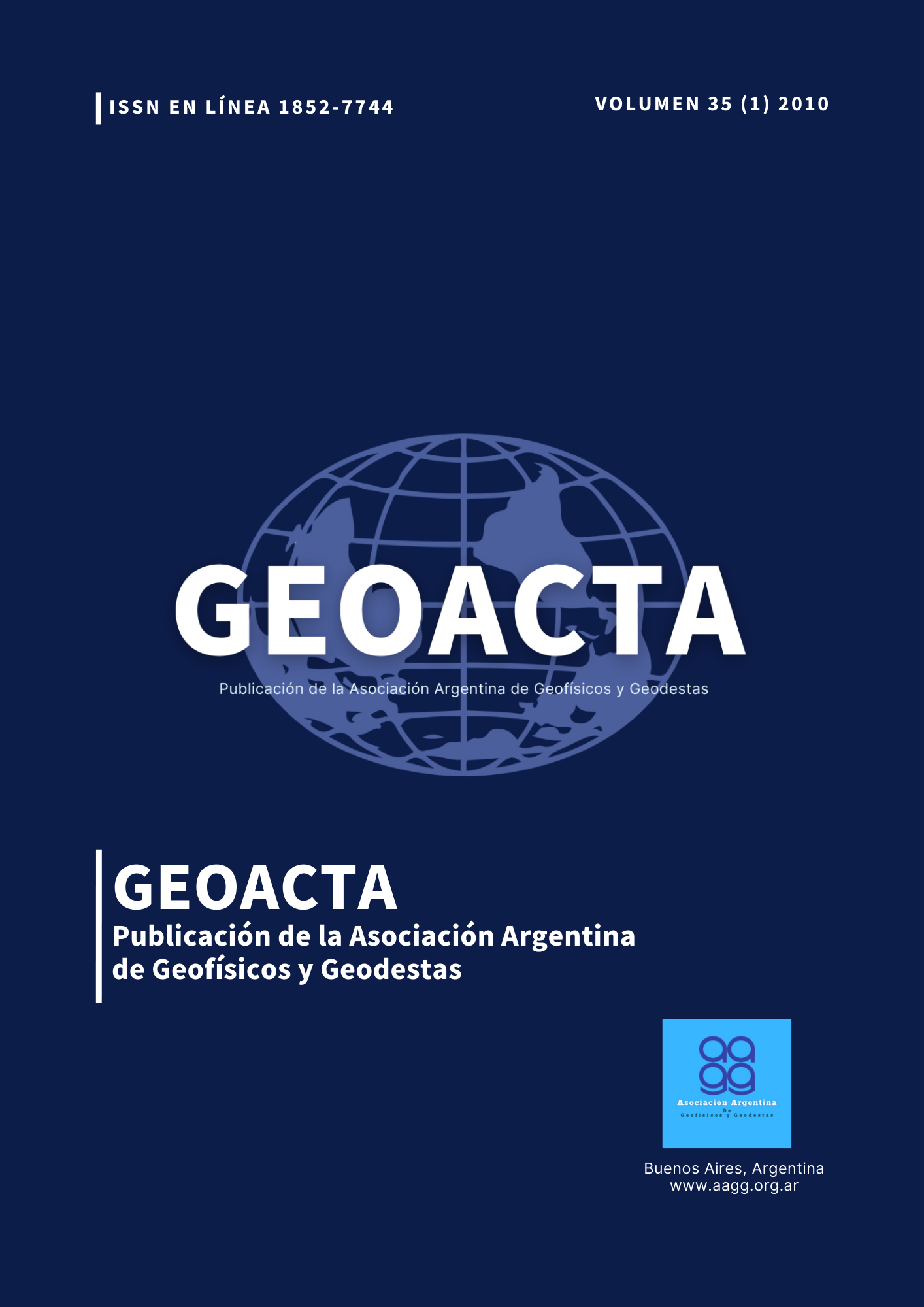Una herramienta cartográfica digital basada en XML para la ciudad de La Plata
Keywords:
geocoding, GIS, Google MapsAbstract
This paper presents a specific application developed by the integration of two tools: Google Maps and a high level programming language: Octave. The Google Maps API in Javascript allows the construction of space objects. This language integrated with algorithms that solve the original geocoding of the streets of La Plata and management of a database can provide a service location. The example presented is the location of the nearest pharmacies to a certain address. Users are prompted to enter their address and the system returns the three closest pharmacies.The code is easily adaptable to other types of requirements: gas stations, restaurants, etc.; its only limitation is that the geocoding is developed for the city of La Plata.
Downloads
References
Brown, M.C., 2006. Hacking Google Maps and Google Earth. Wiley.
Fisher, T., and Fisher, C., 1979. An Overview of the Canada Geographic Information System (CGIS). in International Symposium On Cartography and Computing: Applications in Health and Environment. Reston, Virginia.
García, T. and Viera, L. M., “I Jornada Histórico Geográfica y Genealógica de Berazategui. La Plata: Una Reflexión Sobre La Ciudad y Su Sociedad”, Facultad de Arquitectura y Urbanismo de la Universidad Nacional de La Plata.
Gibson, R. and Erle, S., 2006. Google Maps Hacks. O'Reilly Media. 3pp 66.
Rhind, D.W., 1989. Cartography Past, Present and Future. Elsevier Science & Technology.
Downloads
Published
How to Cite
Issue
Section
License
Copyright (c) 2010 Nadia Kreimer, Mauricio Gende

This work is licensed under a Creative Commons Attribution-NonCommercial-ShareAlike 4.0 International License.
Starting in 2022 (Vol. 43 number 2) articles will be published in the journal under a Creative Commons Attribution-NonCommercial-ShareAlike 4.0 International license (CC BY-NC-SA 4.0)
According to these terms, the material can be shared (copied and redistributed in any medium or format) and adapted (remixed, transformed and created from the material another work), provided that a) the authorship and the original source of its publication (journal and URL of the work), b) is not used for commercial purposes and c) the same license terms are maintained.
Prior to this date the articles were published in the journal under a Creative Commons Attribution license (CC BY)
In both cases, the acceptance of the originals by the journal implies the non-exclusive assignment of the economic rights of the authors in favor of the editor, who allows reuse, after editing (postprint), under the license that corresponds according to the edition.
Such assignment means, on the one hand, that after its publication (postprint) in the GEOACTA Magazine of the Association of Geophysicists and Geodesists, the authors can publish their work in any language, medium and format (in such cases, it is requested that it be recorded that the material was originally published in this journal); on the other, the authorization of the authors for the work to be harvested by SEDICI, the institutional repository of the National University of La Plata, and to be disseminated in the databases that the editorial team considers appropriate to increase visibility. of the publication and its authors.
Likewise, the journal encourages the authors so that after their publication in the Journal of the Association of Geophysicists and Geodesists, they deposit their productions in other institutional and thematic repositories, under the principle that offering society scientific production and Unrestricted academic scholarship contributes to a greater exchange of global knowledge.
















